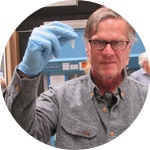Please wait...
About This Project
Our search is for an effective anti-viral. A few carbohydrate binding proteins (lectins) are powerful antivirals. We designed a synthetic gene. The goal of our first experiment is to place this into an e-coli expression plasmid vector, transform it into competent cells, grow it on agar and induce, then purify it. Will we be able to come up with the active substance for a microbicide? This initial experiment will lead us closer to finding an answer to that question.

Browse Other Projects on Experiment
Related Projects
Toward ethical and affordable antivenom solutions: Can anti-toxin be animal cruelty-free?
Snakebite envenoming causes over 100,000 deaths annually, yet current antivenoms depend on animal plasma...
Microplastics: Can engineered enzymes remove microplastics from the human body?
Polyethylene terephthalate (PET) microplastics have been detected in human blood and tissues, and linked...
Shutting down cancer’s recycling system with exosome-based therapy
Pancreatic cancer is one of the deadliest cancers because its cells survive by recycling their own components...





